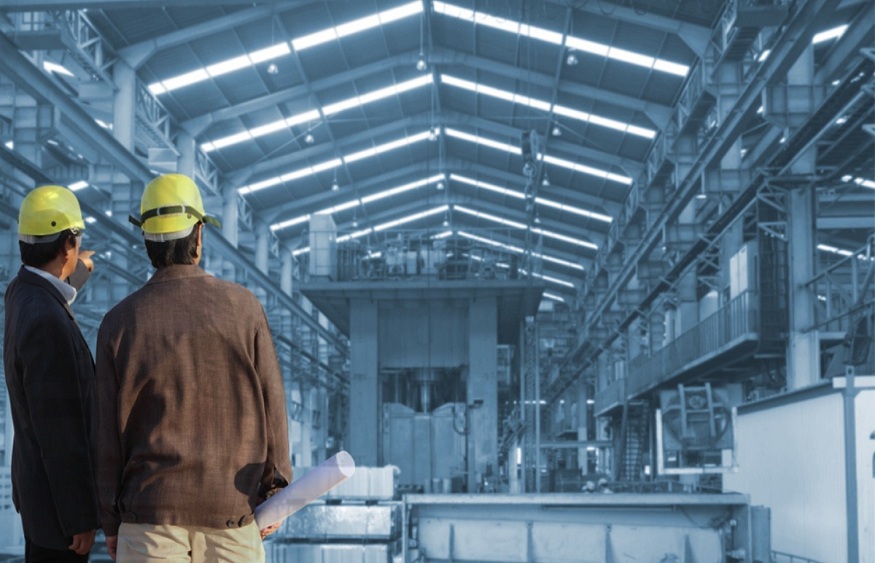Cold Formed Steel Buildings have become increasingly popular in recent years for their durability, strength, and versatility. They are often used for commercial steel frame buildings and provide an affordable and efficient solution for many construction projects. However, choosing the right materials for your cold formed steel building can be a complex and challenging task. In this comprehensive guide, we’ll walk you through the essential considerations you need to keep in mind to make an informed decision.
Understanding the Basics of Cold Formed Steel Buildings
Cold formed steel buildings are constructed using cold-formed steel members made by bending thin sheets of steel into desired shapes. These members are then joined together to create a steel frame structure that can withstand heavy loads and harsh weather conditions.
When it comes to choosing materials for cold-formed steel buildings, there are two main types of steel to consider: hot-rolled steel and cold-rolled steel. Hot-rolled steel is made by heating steel and then rolling it into shape, whereas cold-rolled steel is made by rolling steel at room temperature.
Hot-rolled steel is stronger and more durable than cold-rolled steel but is also more expensive. On the other hand, cold-rolled steel is less expensive and easier to work with, making it a popular choice for many construction projects.
Choosing the Right Steel Thickness
The thickness of the steel you choose for your cold-formed steel building will have a significant impact on its strength and durability. Generally, thicker steel is stronger and more durable, but it also comes at a higher cost. Thinner steel is less expensive but may not be able to withstand heavy loads or harsh weather conditions.
It’s important to consider the specific requirements of your construction project when choosing the steel thickness. Factors such as the size of the building, the weight of the loads it will bear, and the weather conditions it will face will all influence your decision.
Choosing the Right Coating
Cold-formed steel is susceptible to corrosion if not properly coated. Choosing the right coating is essential to ensure the longevity of your building. There are several coating options available, including galvanized, aluminized, and painted coatings.
Galvanized coatings are the most popular choice for cold-formed steel buildings as they provide excellent protection against corrosion. The process involves coating the steel with a layer of zinc, which acts as a barrier between the steel and the elements. Aluminized coatings are similar to galvanized coatings but use aluminum instead of zinc.
Painted coatings are another option but are less effective at preventing corrosion than galvanized or aluminized coatings. They are often used for aesthetic purposes rather than for protection against corrosion.
Choosing the Right Fasteners
Choosing the right fasteners is crucial to ensure the stability and safety of your cold-formed steel building. The wrong fasteners can lead to structural failure, which can be dangerous and costly to repair.
There are several types of fasteners available, including screws, bolts, and rivets. Each type of fastener has its own advantages and disadvantages, so it’s essential to consider the specific requirements of your construction project when choosing the right one.
Screws are a popular choice for cold-formed steel buildings as they are easy to install and provide excellent holding power. Bolts are another option but require more labor to install and may be more expensive. Rivets are the most permanent type of fastener but require specialized equipment to install.
Choosing the Right Insulation
Insulation is an essential component of cold-formed steel buildings as it helps to regulate temperature and reduce energy costs. There are several types of insulation available, including fiberglass, foam, and mineral wool.
Fiberglass insulation is the most popular choice for cold-formed steel buildings as it is affordable and provides excellent thermal performance. Foam insulation is another option but is more expensive than fiberglass.
Mineral wool insulation is a third option and is known for its fire-resistant properties, making it a popular choice for commercial buildings. It is also resistant to mold and moisture, which can be important in areas with high humidity levels.
When choosing the right insulation for your cold-formed steel building, it’s important to consider factors such as the R-value (thermal resistance), the cost, and the level of fire resistance.
Choosing the Right Roofing and Siding Materials
Roofing and siding materials are also an essential component of cold-formed steel buildings, as they provide protection against the elements and can also enhance the building’s aesthetic appeal. There are several roofing and siding materials available, including metal panels, concrete tiles, and asphalt shingles.
Metal panels are a popular choice for cold-formed steel buildings as they are durable, low-maintenance, and can be easily customized to fit any design aesthetic. Concrete tiles are another option but are more expensive and may require additional support due to their weight. Asphalt shingles are a more affordable option but may not be as durable or long-lasting as metal panels or concrete tiles.
When choosing the right roofing and siding materials for your cold-formed steel building, it’s important to consider factors such as cost, durability, maintenance requirements, and the specific climate and weather conditions of your location.
In Conclusion
If you’re planning to construct a cold-formed steel building, it’s important to work with experienced professionals who can help guide you through the decision-making process and ensure that your building meets all safety and code requirements. With the right materials and expert guidance from Coastal Steel Structures, your cold-formed steel building can provide a reliable and efficient solution for your construction needs.

